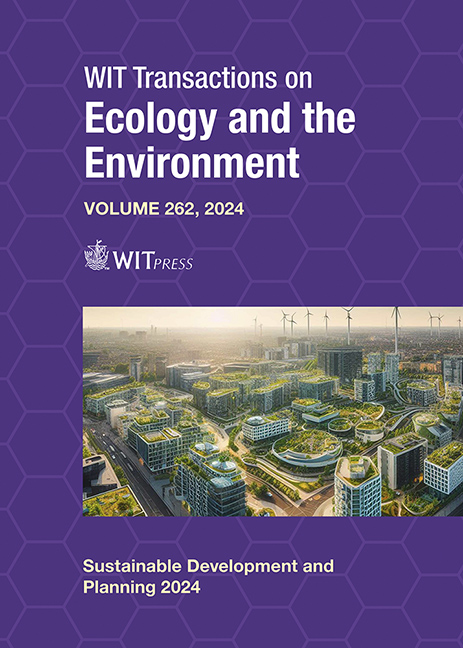PRELIMINARY CORRELATIONS BETWEEN CLIMATE CHANGE AND WASTEWATER TREATMENT PLANT PARAMETERS
Price
Free (open access)
Transaction
Volume
262
Pages
11
Page Range
957 - 967
Published
2024
Paper DOI
10.2495/SDP240791
Copyright
Author(s)
JASSICA LAWRENCE, RAMONA GIUREA, ROBERTA BETTINETTI
Abstract
Wastewater treatment plants (WWTPs) provide an immensely valuable service to the environment and the public, which makes them a necessity for proper functioning. These plants must work in accordance with the Sustainable Development Goals, the circular economy and the FIT for 55 indications. They are susceptible to climate change, i.e., critical weather: excessive or minimum rainfall and droughts. That impacts the wastewater quality and quantity, characteristics, and removal of parameters such as phosphorus, chemical oxygen demand, nitrate, and biochemical oxygen demand. WWTPs in connection with circular sustainability and climate change are an emerging concept. Various sustainable circular ways could relate to WWTP, as treated wastewater could be reused and/or recycled from a circular economy view but depends strongly on the efficiency of WWTP to remove the hazardous substances and to provide a clean effluent. To achieve the full potential of WWTP, it is important that they can manage the effects of climate change with adequate functioning in the process and infrastructure to produce an effluent that meets environmental standards. Limited studies are present in the literature regarding the full understanding of the importance of WWTPs concerning climate change and circular sustainability considering treatment process and effluent quality. Therefore, this research aims to illustrate the influence of climate change on a real WWTP in the north of Italy, Como. The results are useful not only for the WWTP managers and policy makers, but also for the scientific world. They also raise attention to the actual seriousness of climate change impacts and could help to prepare and cope with future environmental changes.
Keywords
wastewater treatment plant, climate change, sustainability, circular economy





